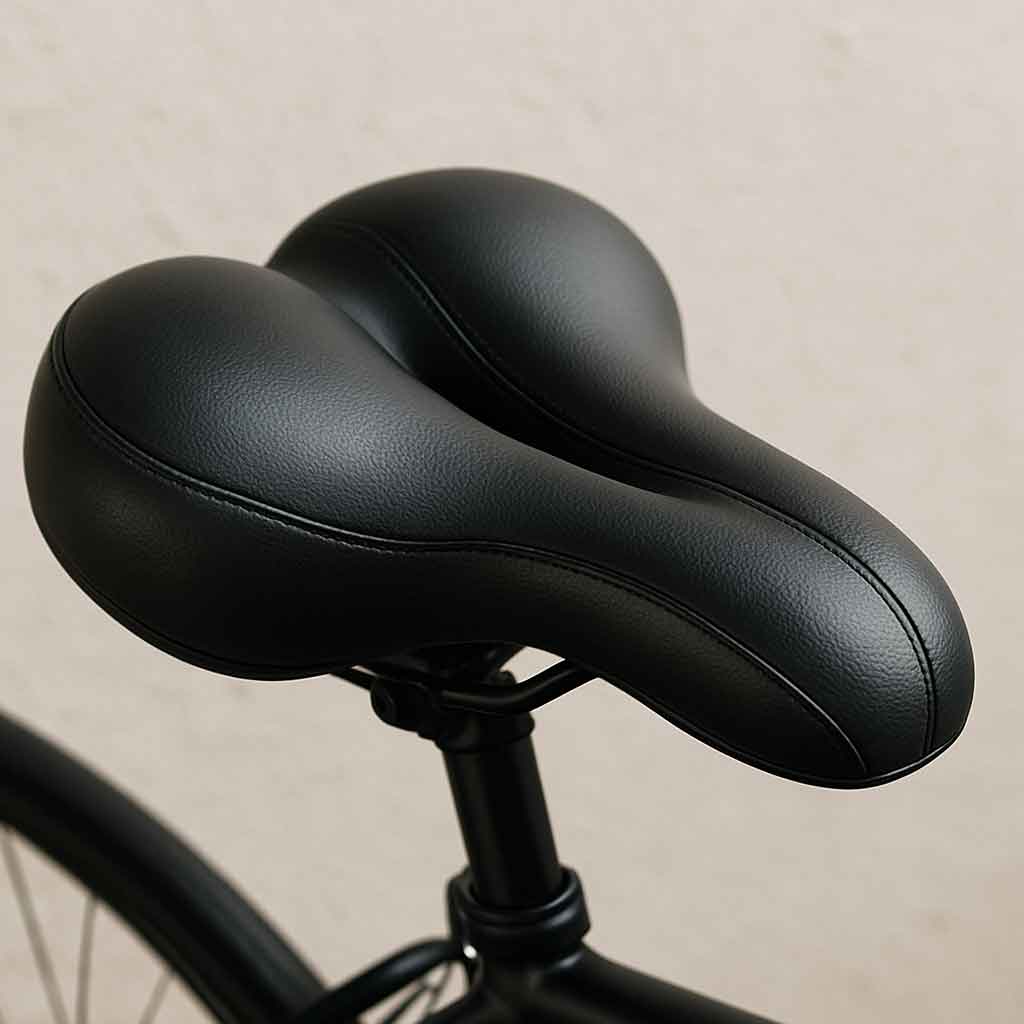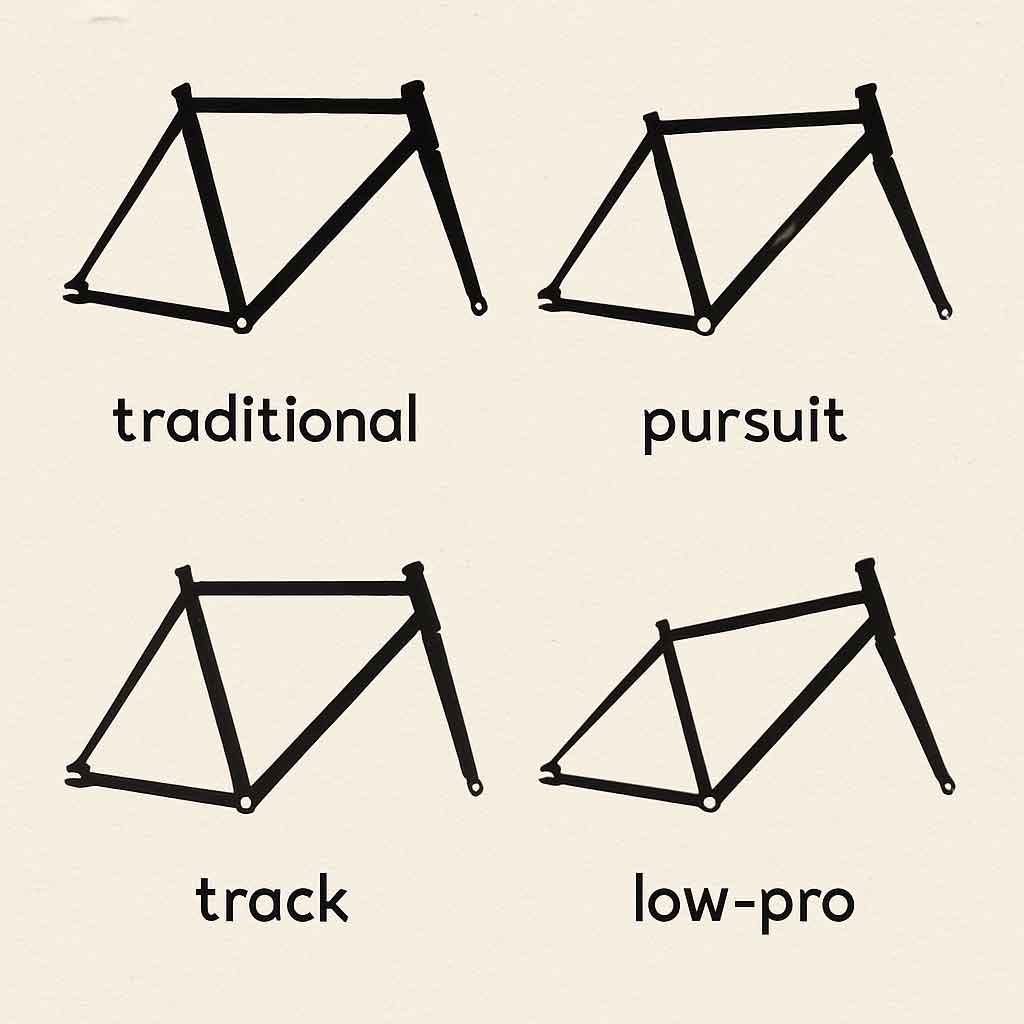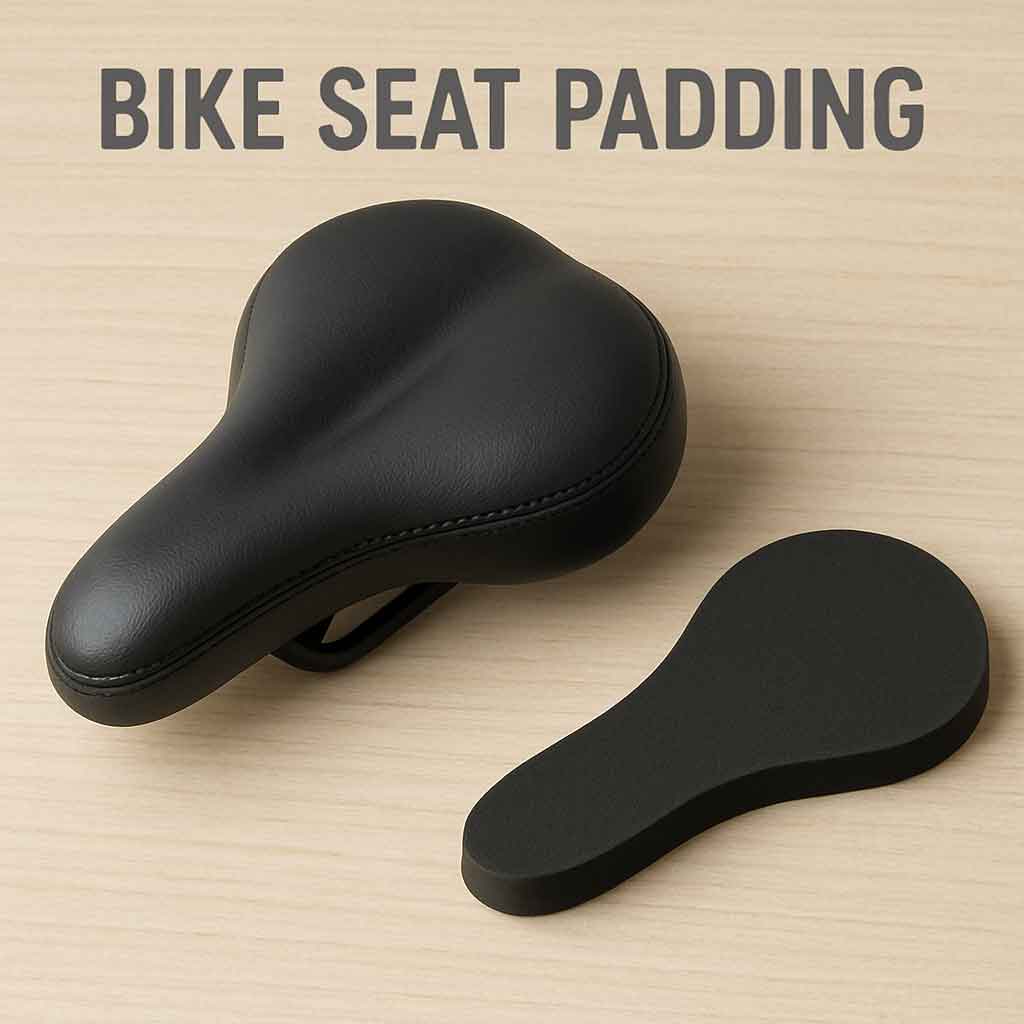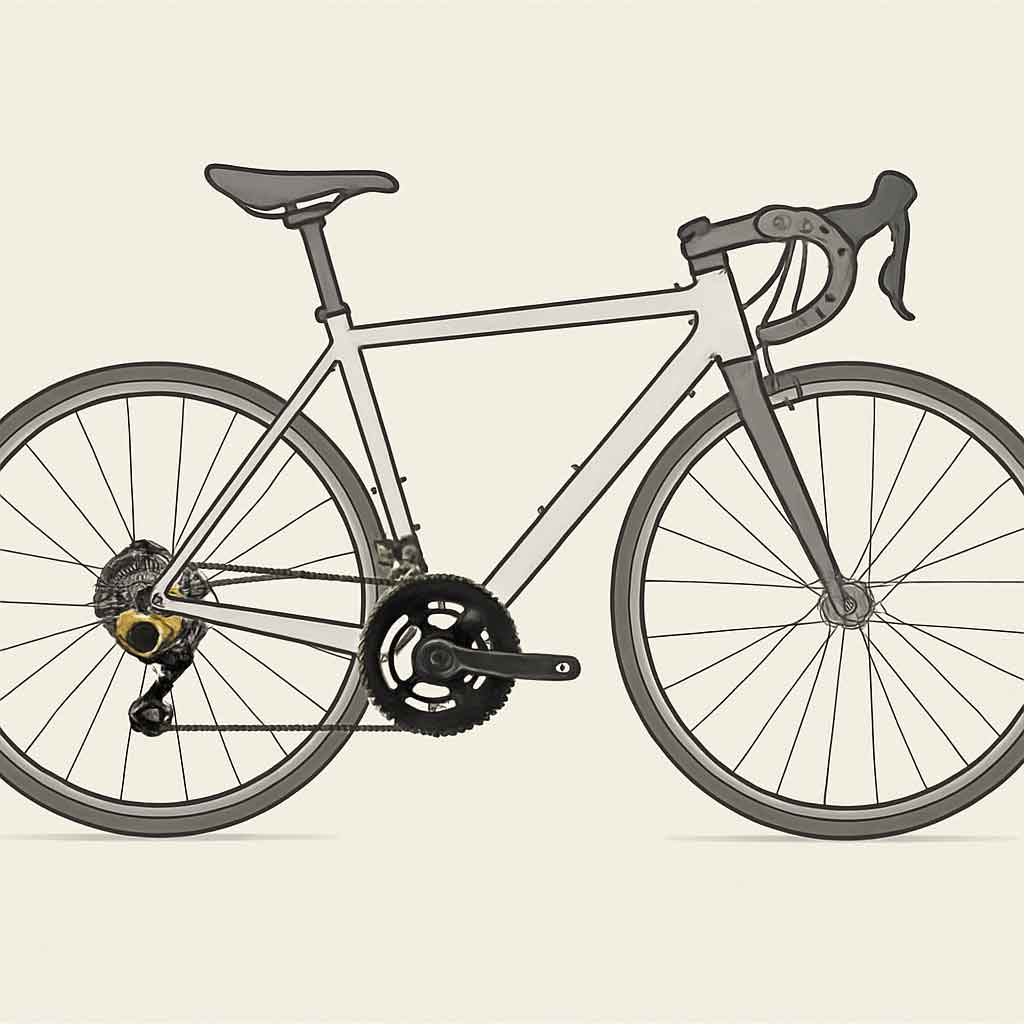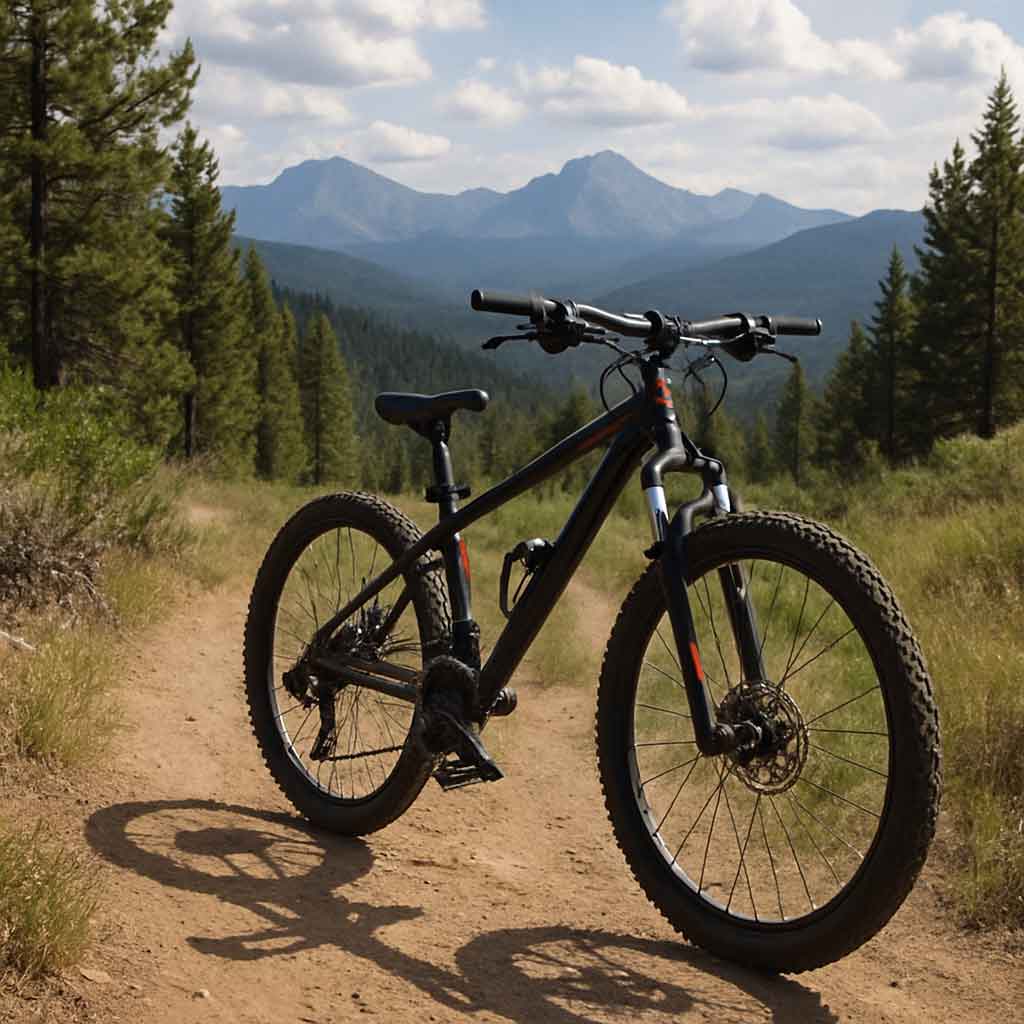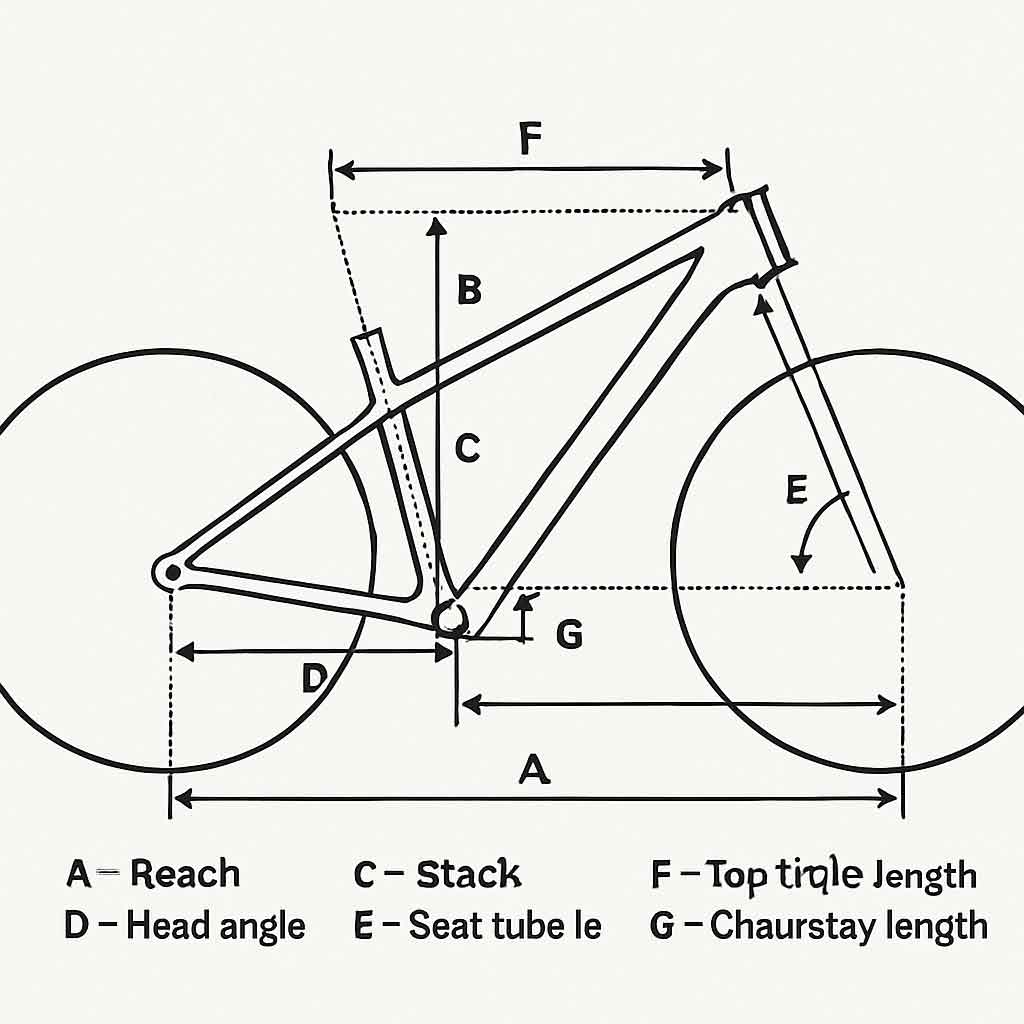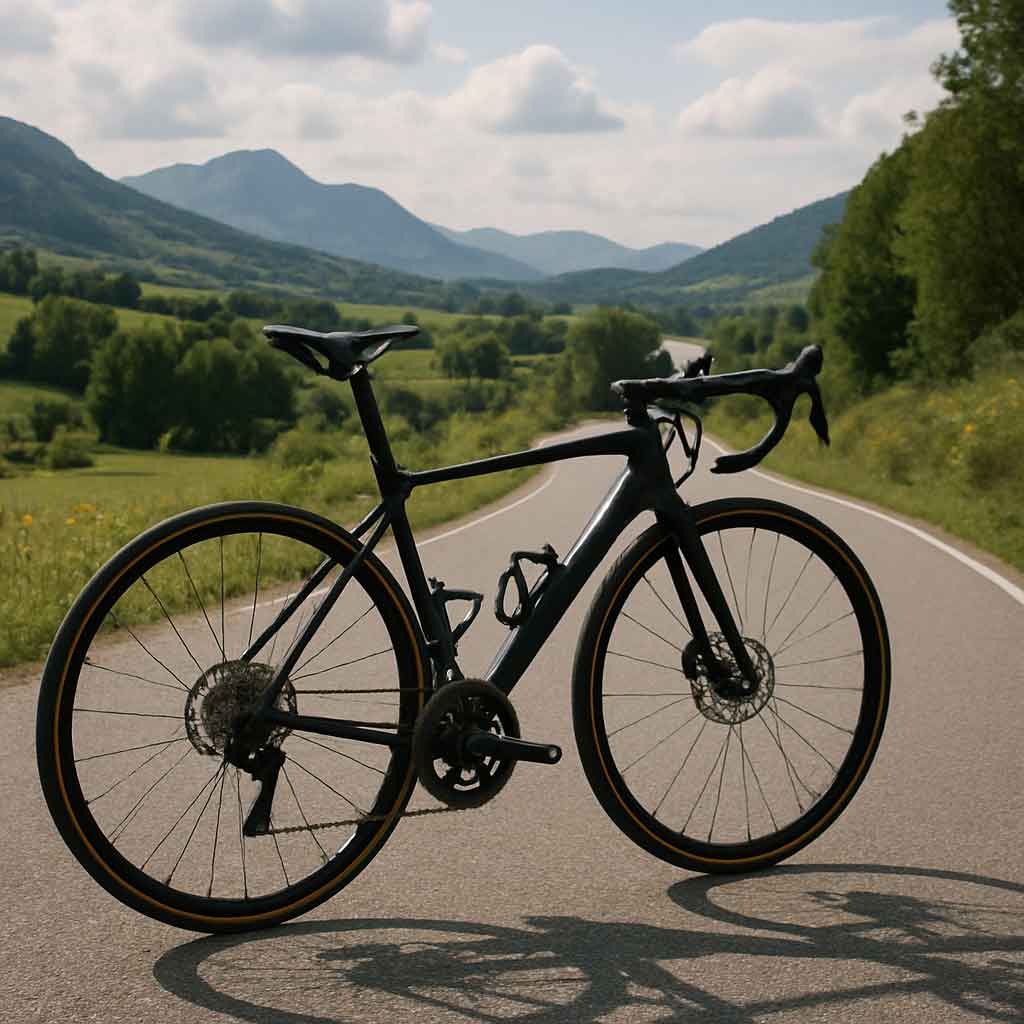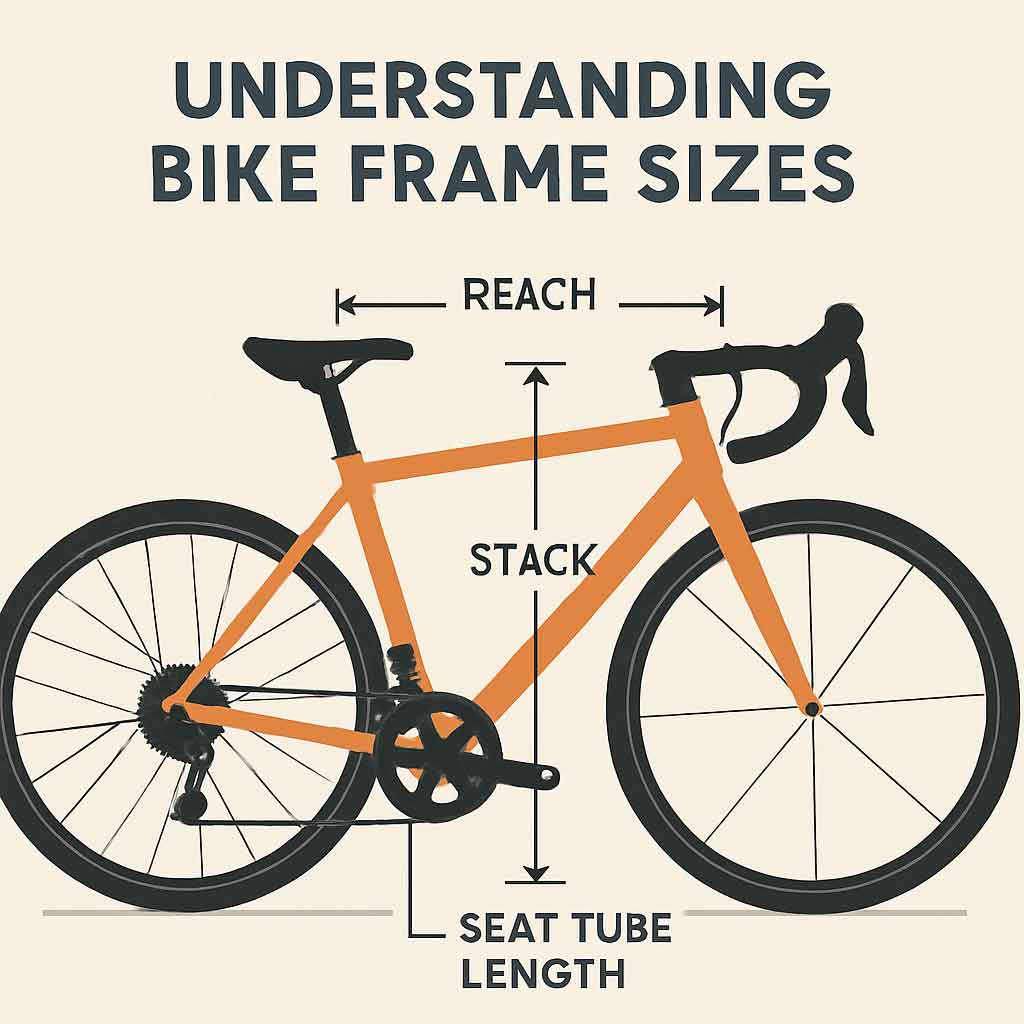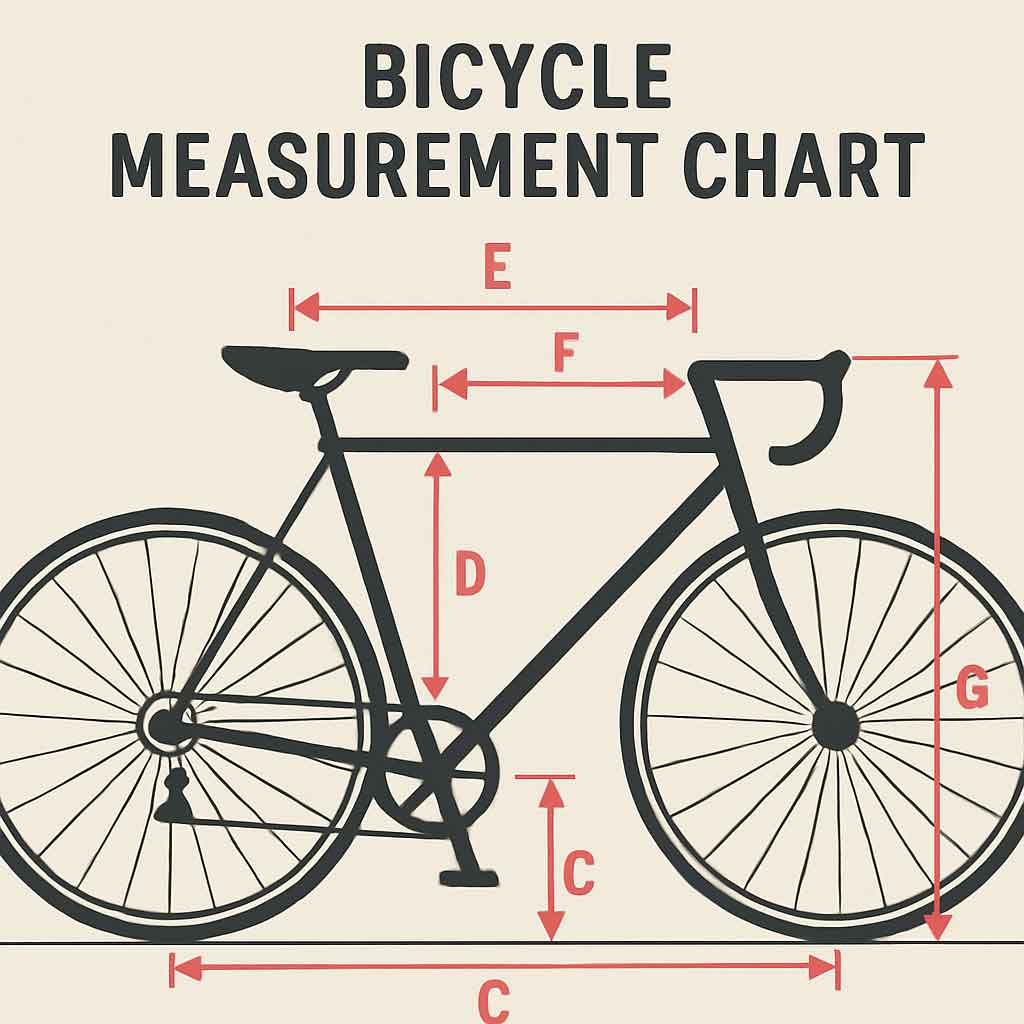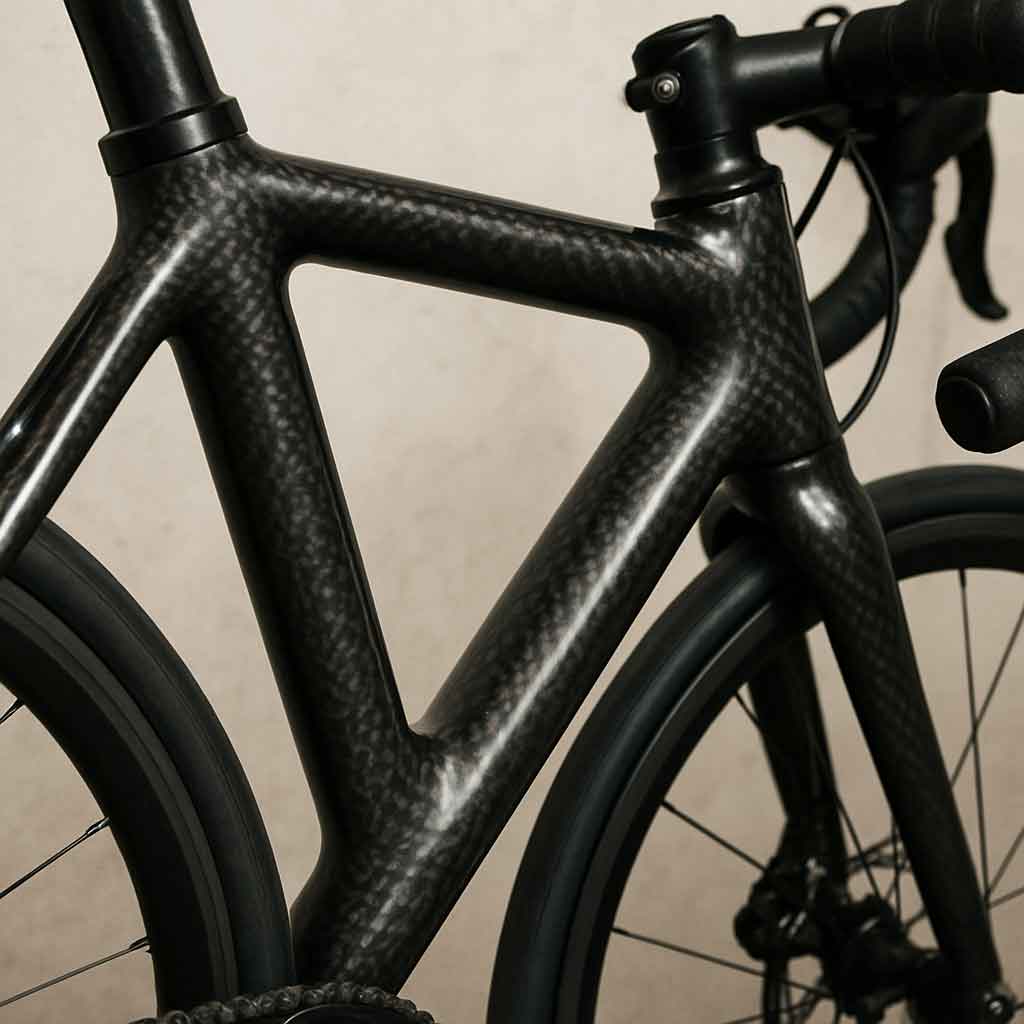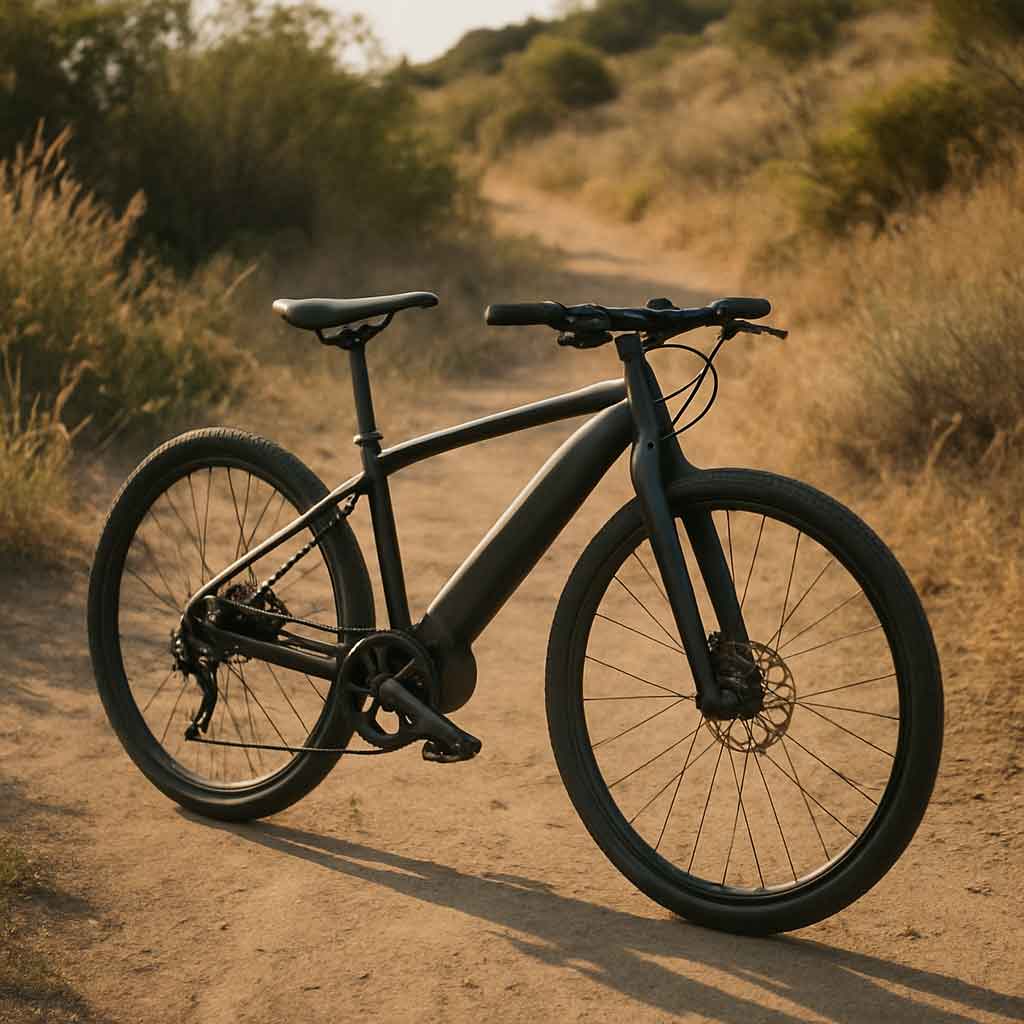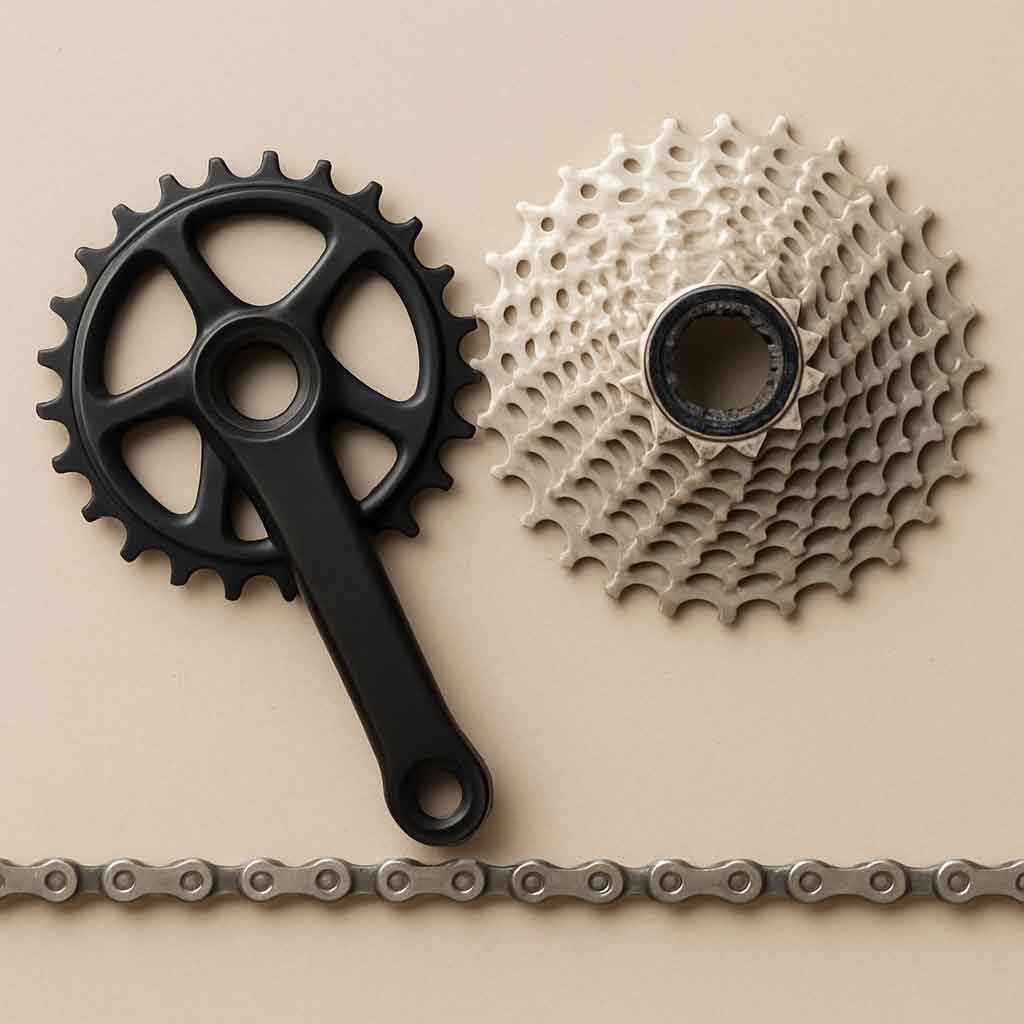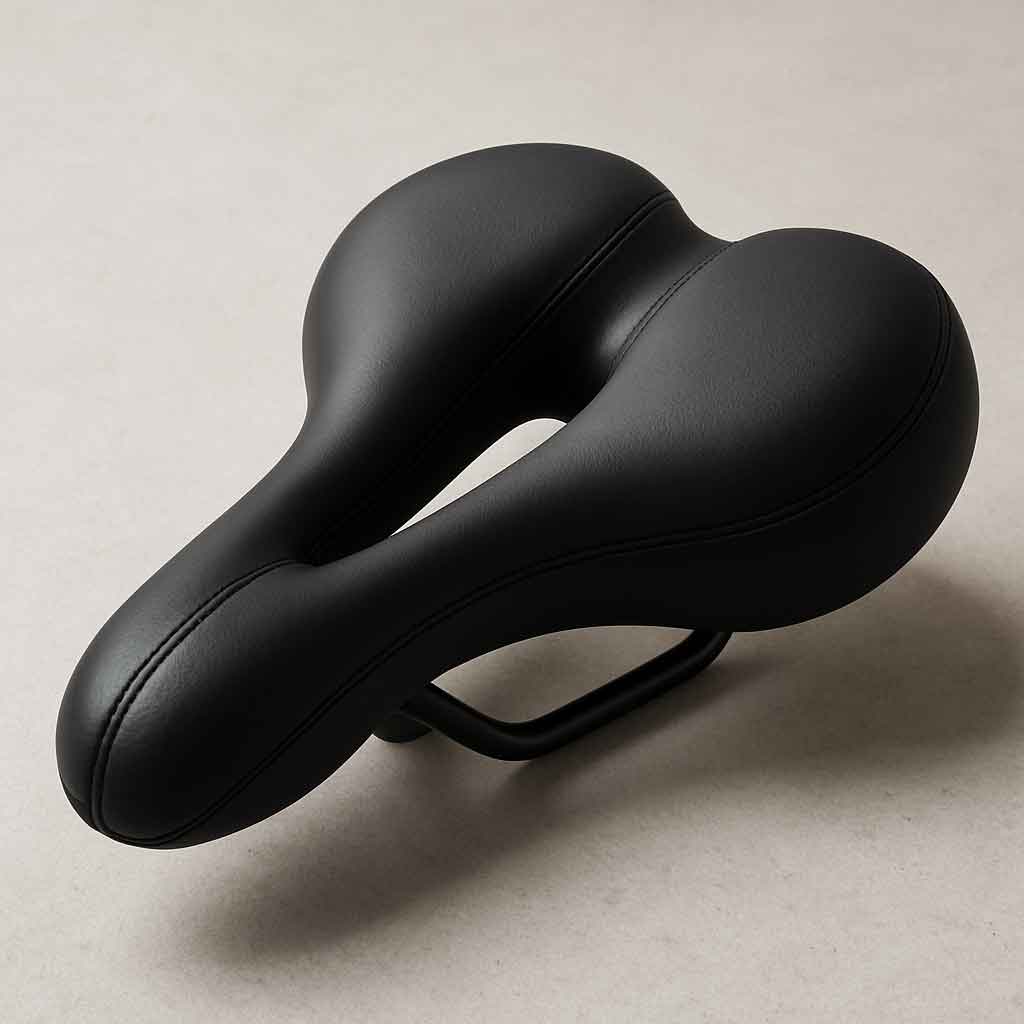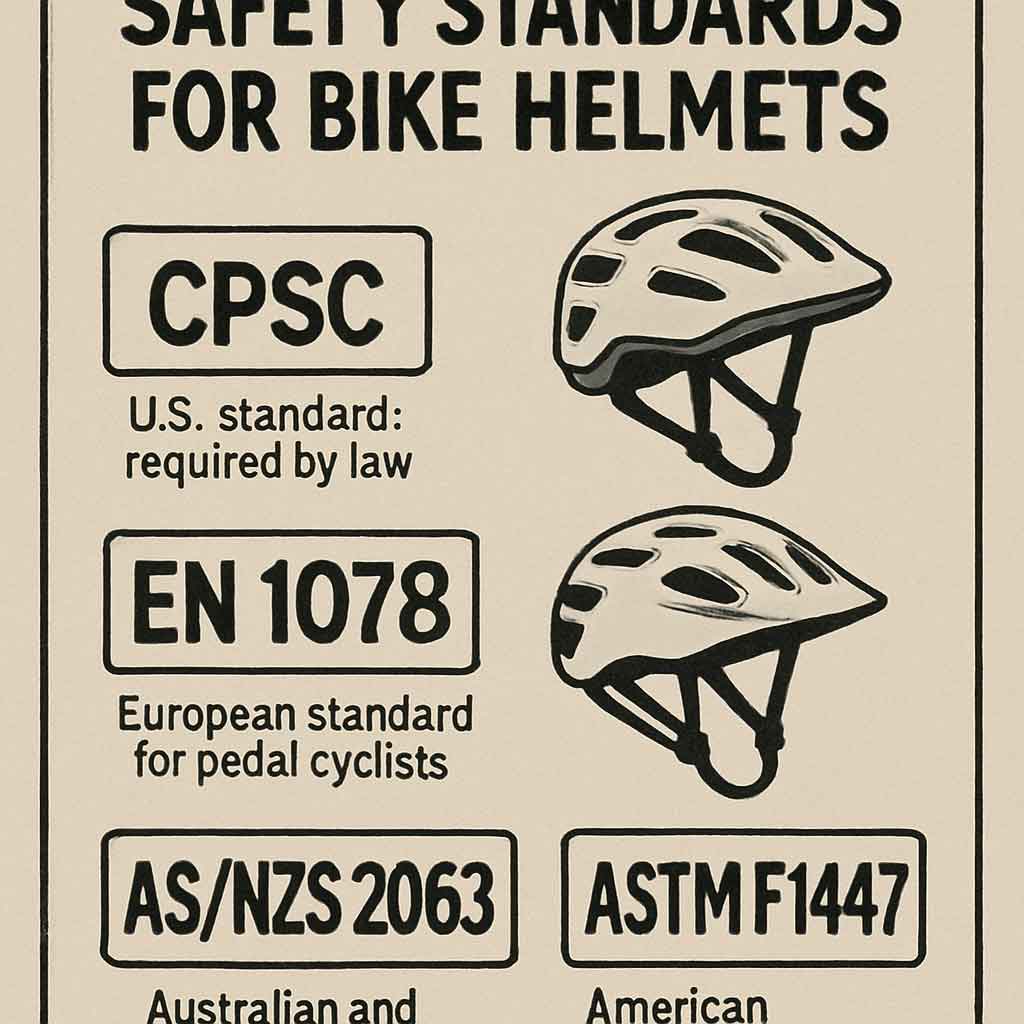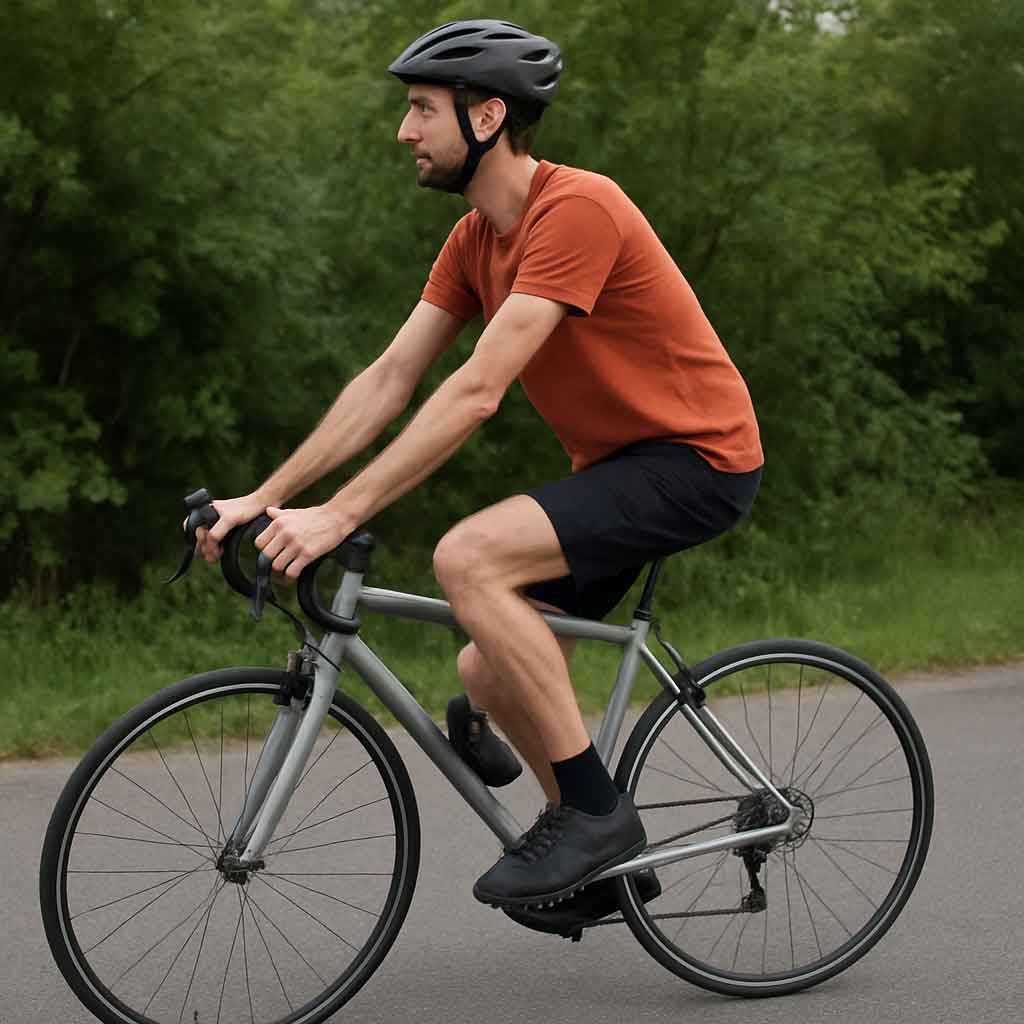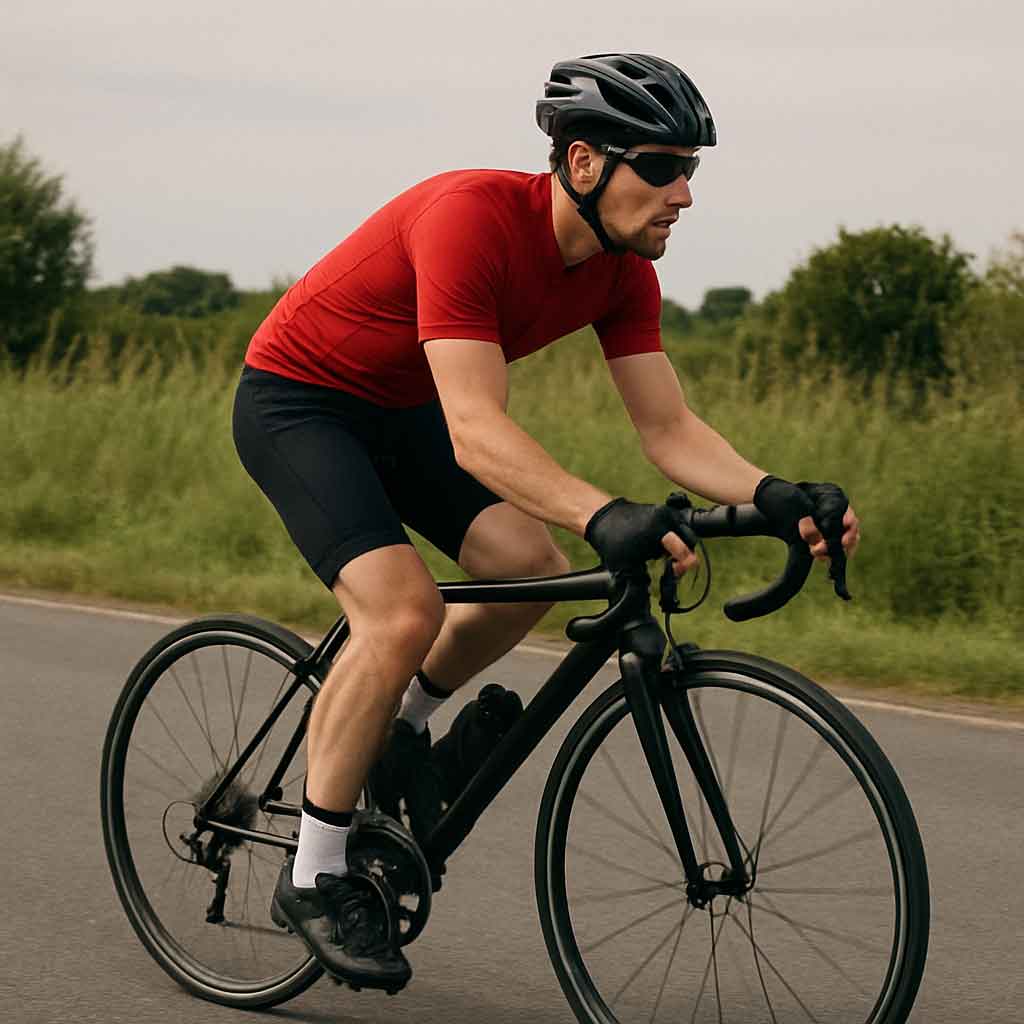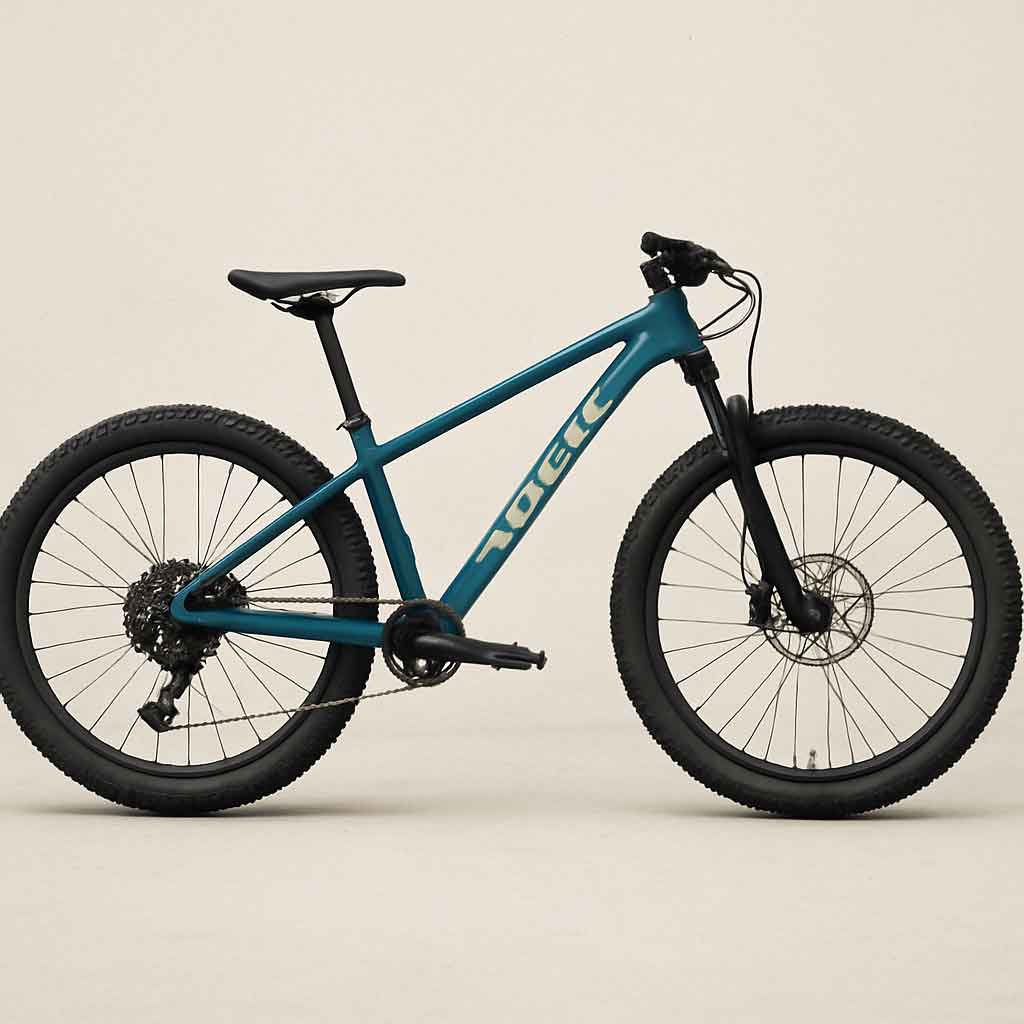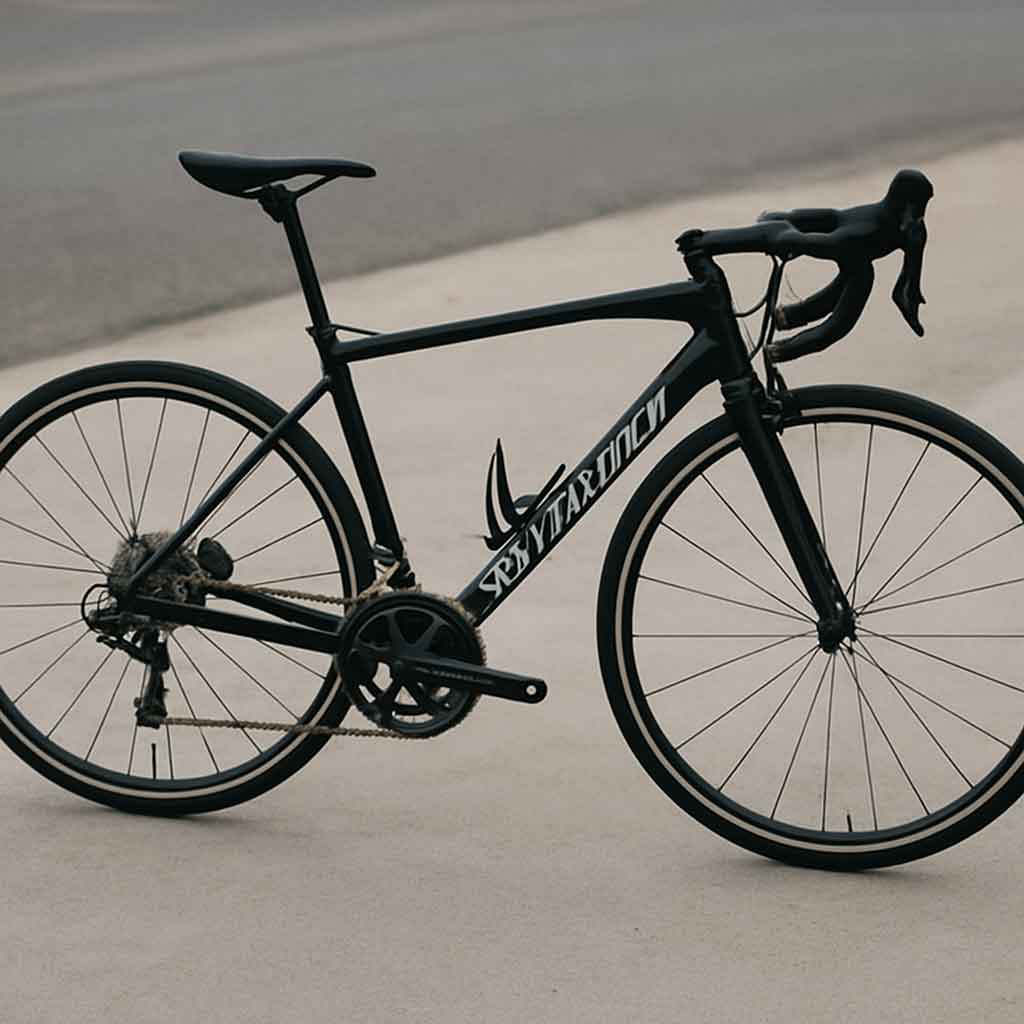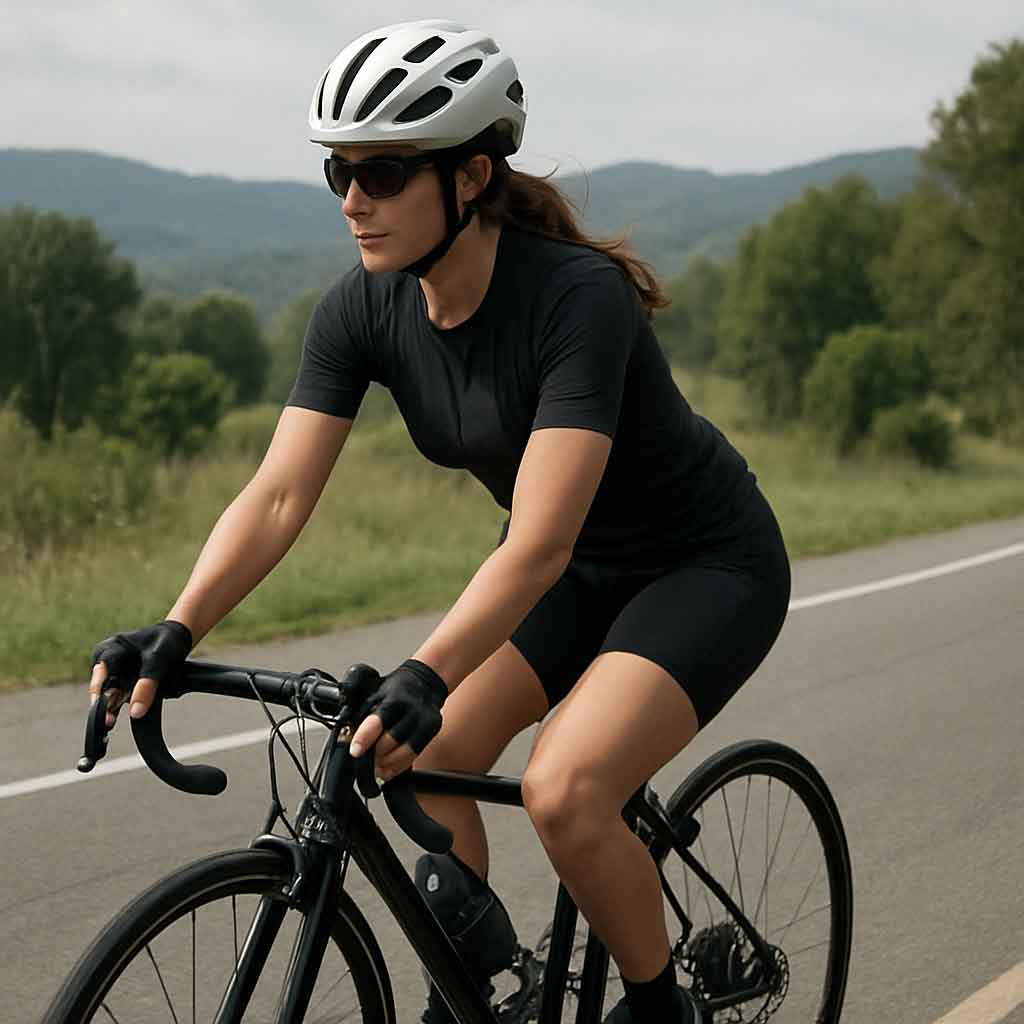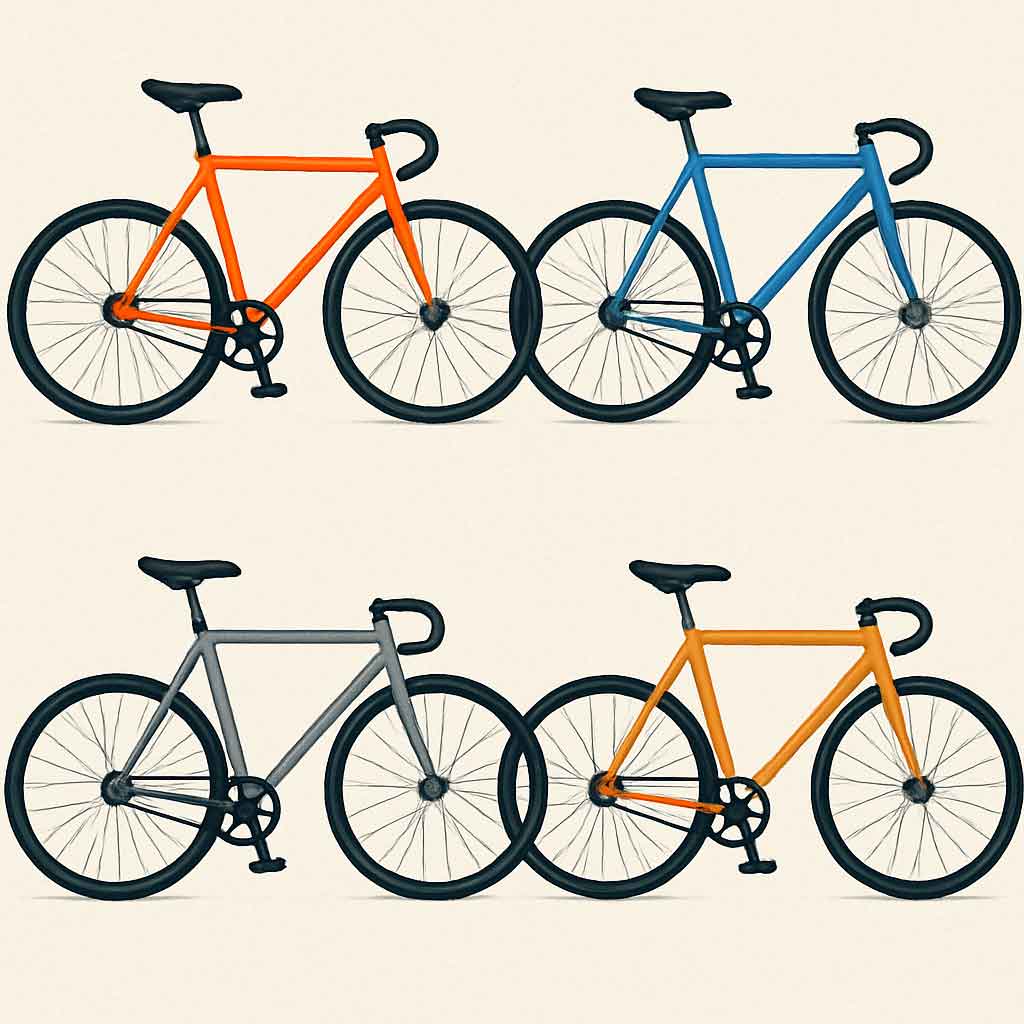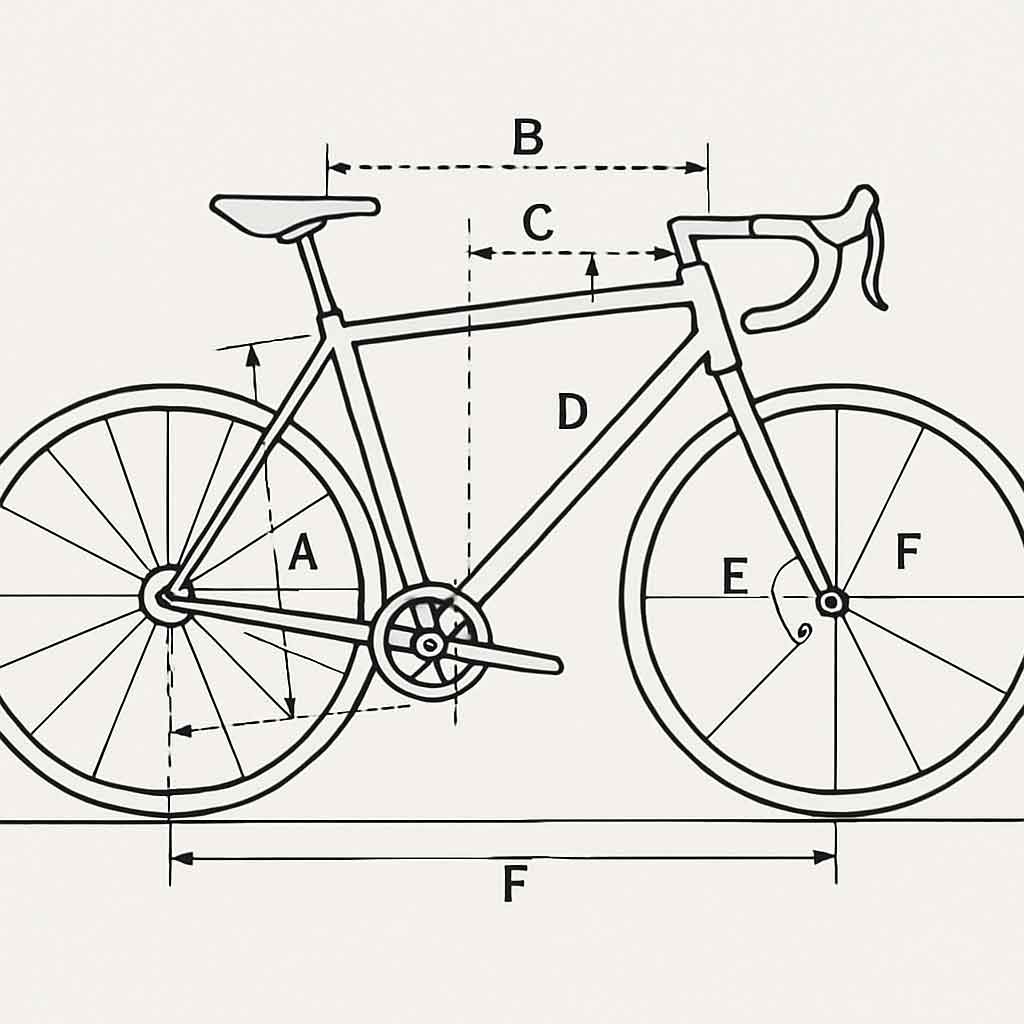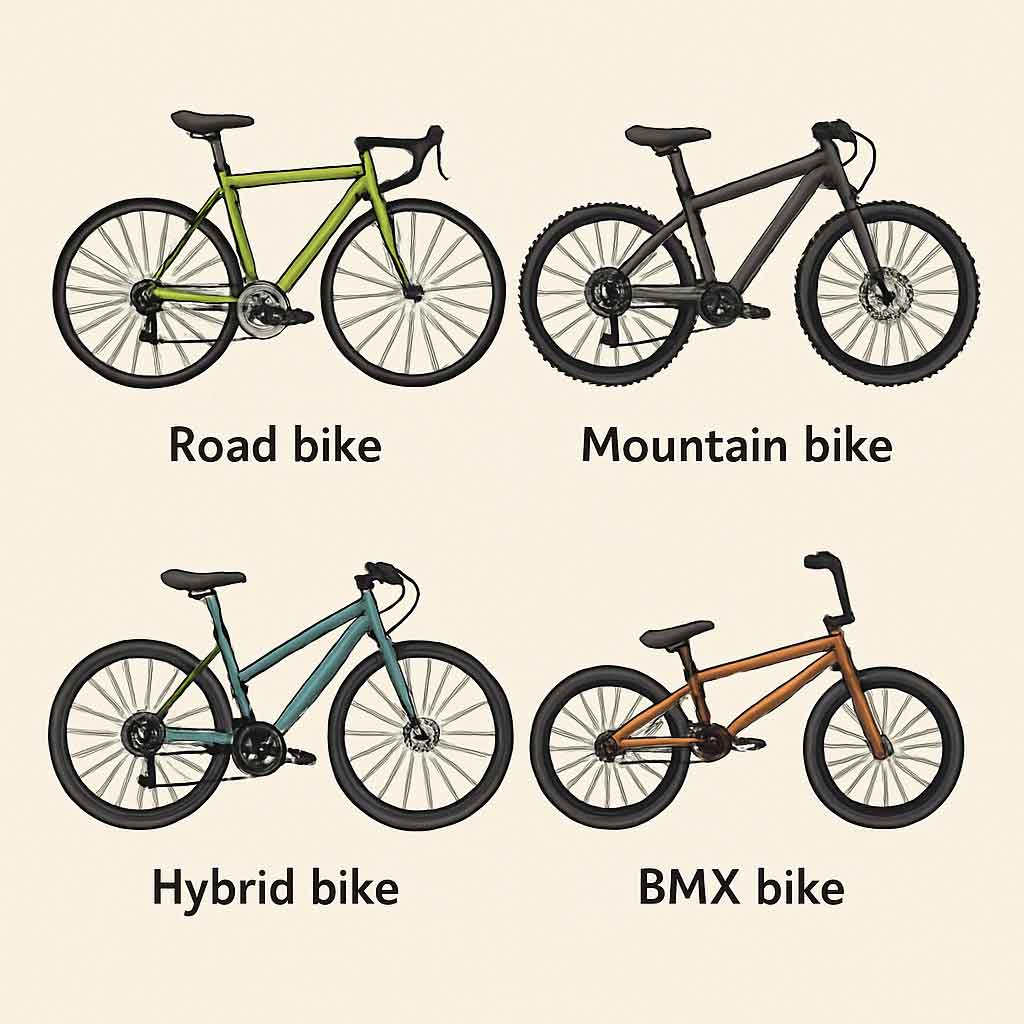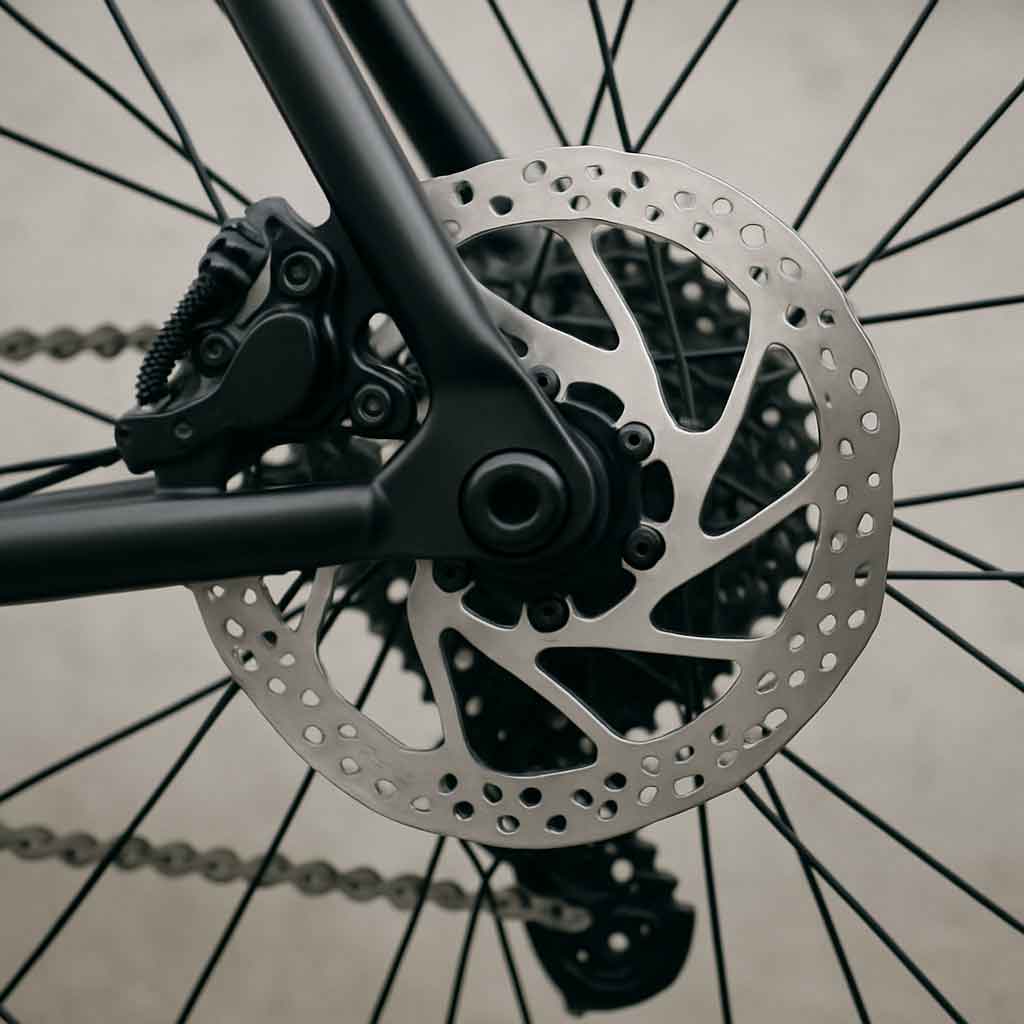When it comes to choosing the right bicycle, size is crucial. Riding a bike that fits your body correctly not only enhances comfort but also improves performance and reduces the risk of injury. Whether you're into road biking, mountain biking, or just leisurely rides, understanding bike size is essential. In this comprehensive guide, we'll break down everything you need to know about bike sizes, including how to measure a bike and choose the perfect frame size for you.

Enhancing Comfort
Bike size plays a significant role in how comfortable you feel while riding. A properly sized bike allows you to maintain a natural position, reducing strain on your back, shoulders, and neck. When your bike fits well, you can ride for longer periods without experiencing discomfort, making cycling more enjoyable.
Improving Performance
A bike that's the right size can significantly impact your performance. When your bike fits correctly, you can efficiently transfer power from your legs to the pedals, optimizing your speed and endurance. This efficiency is crucial for competitive cyclists and those aiming to improve their personal bests.
Reducing Risk of Injury
Riding a bike that's too small can cause discomfort in your knees and back, while a bike that's too large can make you feel out of control. An ill-fitted bike can lead to injuries such as knee pain, back pain, and wrist strain. Ensuring you have the correct size will help you ride more efficiently and comfortably while minimizing the risk of injury.
How to Measure Bike Size
Measuring Your Height and Inseam
Before you can determine the right bike size, you need to know your height and inseam. These measurements are fundamental in finding a bike that fits well.
Measuring Your Height
To measure your height accurately, stand straight against a wall without shoes. Use a pencil to mark the top of your head on the wall, then measure the distance from the floor to the mark. This measurement is essential for referencing bike size charts and ensuring you choose the right frame.
Measuring Your Inseam
Your inseam is the distance from your crotch to the ground. Stand with your feet about 6 inches apart. Place a book between your legs, as if it were a bike seat, and measure from the top of the book to the floor. This measurement helps determine the appropriate frame size, especially for road and mountain bikes.
Importance of Accurate Measurements
Accurate measurements are crucial for selecting the right bike size. Even a slight error can lead to discomfort and poor performance. Take your time to measure carefully, and if possible, ask someone to assist you for more precise results.
How to Measure a Bike Frame
Bike frames are usually measured in centimeters for road bikes and inches for mountain bikes. Knowing how to measure a bike frame will help you understand if a bike is suitable for your body size.
Locating the Crank Arms
Place the bike on a flat surface and locate the crank arms where the pedals are attached. This location is the starting point for measuring the frame size.
Measuring from the Bottom Bracket
Measure from the center of the bottom bracket (where the crank arms meet) to the top of the seat tube. This measurement is the frame size and is crucial for determining if the bike will fit you properly.
Understanding Frame Size Variations
Bike frames come in various sizes and geometries to accommodate different body types and riding styles. Understanding these variations will help you choose a bike that matches your riding needs and personal preferences.
Using a Bike Frame Size Chart
Understanding Bike Frame Size Charts
Bike frame size charts are valuable tools that match your height and inseam with the appropriate bike size. These charts provide a starting point for selecting a bike, but personal preferences and intended use should also be considered.
Road Bike Size Chart
Road bikes are designed for speed and efficiency on paved surfaces. Here's a general guide to road bike frame sizes:
- 4'10" - 5'1": 46 - 48 cm
- 5'1" - 5'3": 48 - 51 cm
- 5'3" - 5'5": 51 - 53 cm
- 5'5" - 5'8": 53 - 55 cm
- 5'8" - 5'10": 55 - 57 cm
- 5'10" - 6'0": 57 - 60 cm
- 6'0" - 6'3": 60 - 63 cm
- 6'3" - 6'6": 63 - 66 cm
Mountain Bike Frame Size Chart
Mountain bikes are built for off-road adventures, requiring stability and control. The frame size for mountain bikes is generally smaller than road bikes:
- 4'10" - 5'2": 13 - 14 inches
- 5'2" - 5'6": 15 - 16 inches
- 5'6" - 5'10": 17 - 18 inches
- 5'10" - 6'1": 19 - 20 inches
- 6'1" - 6'4": 21 - 22 inches
- 6'4" and taller: 23+ inches
Considering Personal Preference and Riding Style
While size charts provide a guideline, personal preference and riding style also play a significant role in choosing the right bike. Some riders prefer a more compact frame for maneuverability, while others opt for a larger frame for comfort.
How to Choose the Right Bike Frame Size
Choosing the right bike frame size involves more than just matching numbers. Personal preference and riding style also play a part. Here's how to choose:
Test Ride Different Sizes
If possible, test ride different sizes to see what feels best. A test ride allows you to experience the bike's fit and comfort firsthand, helping you make an informed decision.
Consider Adjustable Features
Handlebar height and seat position can be adjusted to improve fit. These adjustments can make a significant difference in comfort and performance, allowing you to fine-tune the bike to your body.
Consult a Professional
Visit a local bike shop for expert advice and fitting. Professional bike fitters can assess your measurements, riding style, and preferences to recommend the best size and adjustments for your needs.
How to Determine Bicycle Size for Different Types
Road Bikes
Road bikes are designed for speed and efficiency on paved surfaces. The size of a road bike is particularly important because it affects aerodynamics and comfort over long distances. Use the road bike size chart mentioned earlier to find your size.
Importance of Aerodynamics
Road bikes are designed to be aerodynamic, which helps riders achieve higher speeds with less effort. A properly sized road bike allows you to maintain an aerodynamic position, reducing wind resistance.
Comfort on Long Rides
Comfort is crucial for long-distance rides. A well-fitted road bike ensures you can ride for extended periods without experiencing discomfort, making it easier to enjoy long rides and endurance events.
Customizing Your Road Bike Fit
Consider customizing your road bike fit with adjustable components. Handlebar reach, saddle height, and stem length can be adjusted to enhance comfort and performance.
Mountain Bikes
Mountain bikes are built for off-road adventures, which require stability and control. A slightly smaller frame may be preferable for better maneuverability on rough terrain.
Navigating Rough Terrain
Mountain biking involves navigating rough and uneven terrain. A smaller frame size can provide better control and agility, allowing you to maneuver more easily on challenging trails.
Stability and Control
Stability is essential for off-road riding. A properly sized mountain bike provides the stability needed to tackle obstacles and maintain control on steep descents.
Personalizing Your Mountain Bike
Consider personalizing your mountain bike with components suited to your riding style. Suspension settings, tire pressure, and handlebar width can be adjusted to improve performance and comfort.
Hybrid and City Bikes
Hybrid and city bikes offer a mix of features suitable for both commuting and casual rides. These bikes are more forgiving in size, but you should still aim for a comfortable fit.

Versatility for Commuting and Leisure
Hybrid and city bikes are versatile, making them ideal for commuting and leisurely rides. Their design accommodates a more upright riding position, which is comfortable for everyday use.
Importance of Comfort
Comfort is a priority for hybrid and city bikes. A properly sized bike ensures you can ride comfortably for extended periods, making it suitable for daily commuting or leisurely rides around town.
Adjusting for Urban Riding
Consider adjusting your hybrid or city bike for urban riding conditions. Accessories like fenders, racks, and lights can enhance your biking experience and make your rides more convenient.
Common Questions About Bike Sizing
What Size Road Bike Do I Need?
To determine the right road bike size, refer to a road bike height chart, take your height and inseam measurements, and compare them to the size chart. Remember that personal preference can make a difference, so consider test riding different sizes.
Importance of Test Riding
Test riding different bike sizes allows you to feel the differences in fit and handling. It helps you choose a bike that meets your comfort and performance needs.
Fine-Tuning for Optimal Fit
After selecting a size, fine-tune your bike's fit with adjustable components. Experiment with seat height, handlebar position, and pedal alignment to achieve optimal comfort.
Seeking Expert Advice
If you're unsure about sizing, seek advice from a professional fitter. Their expertise can help you make the right choice and ensure your bike is set up for your unique needs.
How Do I Determine Bike Frame Size If I'm Between Sizes?
If you find yourself between sizes, consider the following:
Assessing Riding Style
Riding style influences frame size choice. Choose the smaller size for a more aggressive, aerodynamic position, or the larger size for comfort and a relaxed riding posture.
Utilizing Adjustability
Remember that seat height and handlebar reach can be adjusted. These adjustments can compensate for size differences and help you achieve a comfortable fit.
Consulting a Bike Fitting Professional
Consult a professional if you're uncertain about choosing between sizes. They can provide valuable insights and recommendations based on your measurements and riding preferences.
What If I Buy a Bike Online?
Buying a bike online can be tricky due to sizing. Always check the retailer's sizing guide and return policy. Measure yourself carefully and compare with the provided size chart.
Importance of Accurate Measurements
Ensure your measurements are accurate before purchasing a bike online. Double-check your height and inseam to avoid choosing the wrong size.
Reviewing Return Policies
Familiarize yourself with the retailer's return policy. Knowing you can return or exchange the bike if it doesn't fit provides peace of mind when purchasing online.
Seeking Virtual Fitting Services
Some retailers offer virtual fitting services. Take advantage of these resources to receive personalized sizing recommendations and ensure a better fit.
Conclusion
Understanding bike size is essential for a comfortable and efficient ride. By knowing how to measure a bike frame and using size charts, you can make informed decisions about what bike size is right for you. Whether you're a seasoned cyclist or a beginner, choosing the right bike size will enhance your riding experience and ensure you enjoy every mile. Happy cycling!



